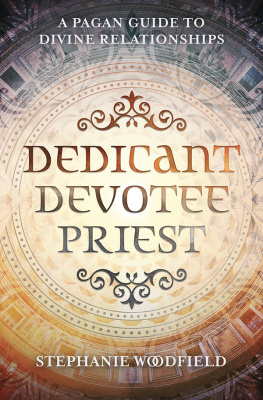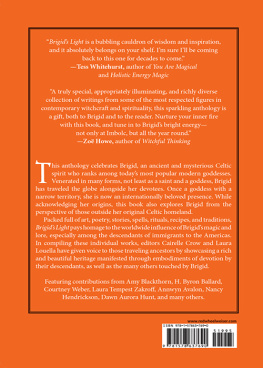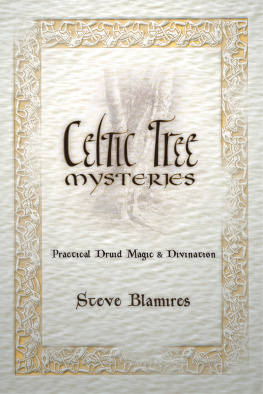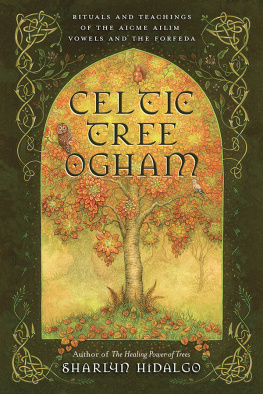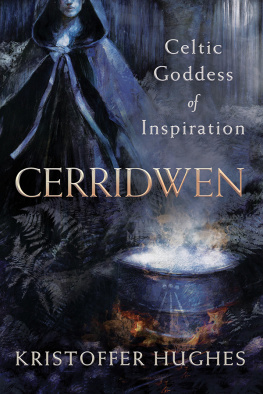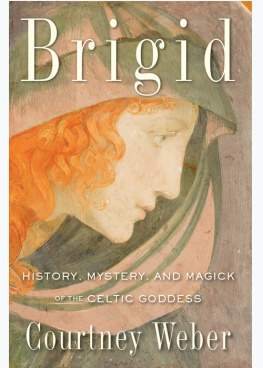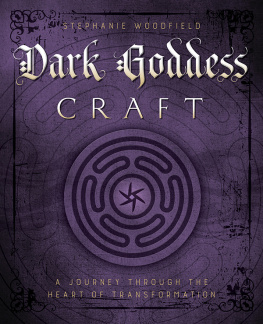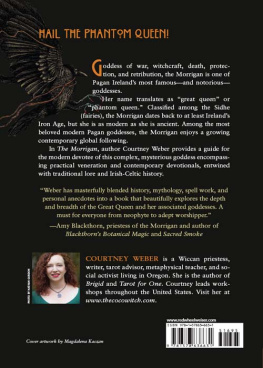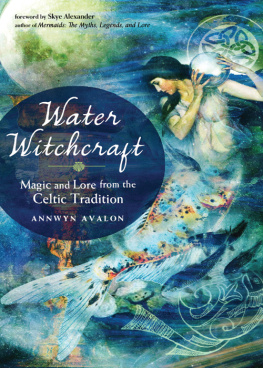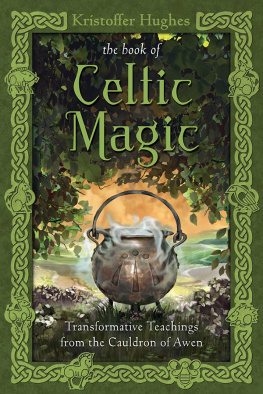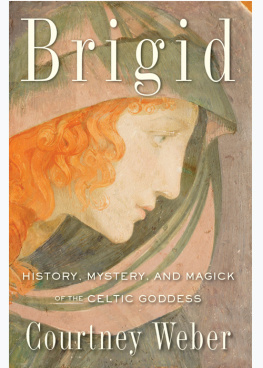About the Author
Stephanie Woodfield (Brookfield, CT) has been a practicing Witch for over fourteen years and a Priestess for ten years. Her lifelong love of Irish mythology led to a close study of Celtic Witchcraft. A natural clairvoyant and empath, she has worked as a Tarot card reader and is ordained as a minister with the Universal Life Church.
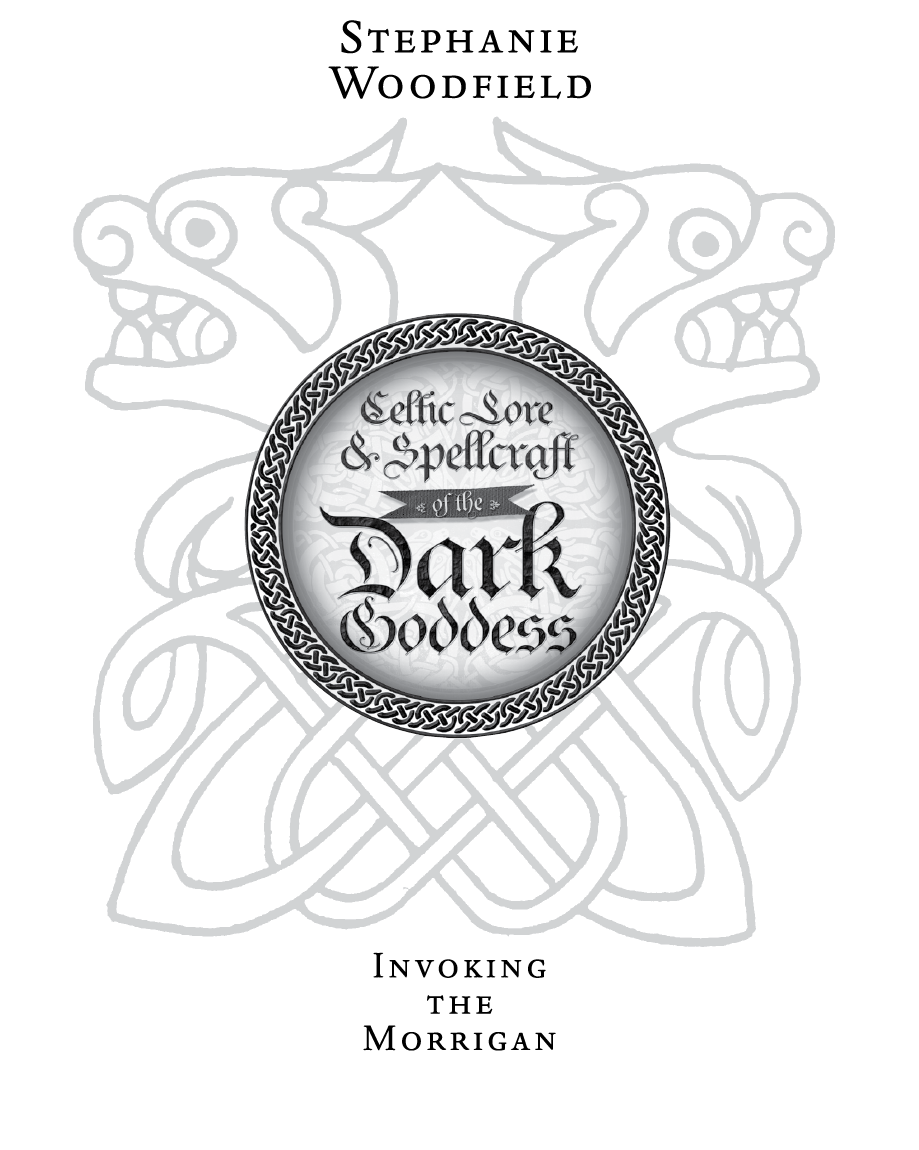

Llewellyn Publications
Woodbury, Minnesota
Copyright Information
Celtic Lore & Spellcraft of the Dark Goddess: Invoking the Morrigan 2011 by Stephanie Woodfield.
All rights reserved. No part of this book may be used or reproduced in any matter whatsoever, including Internet usage, without written permission from Llewellyn Publications, except in the form of brief quotations embodied in critical articles and reviews.
As the purchaser of this e-book, you are granted the non-exclusive, non-transferable right to access and read the text of this ebook on screen. The text may not be otherwise reproduced, transmitted, downloaded, or recorded on any other storage device in any form or by any means.
Any unauthorized usage of the text without express written permission of the publisher is a violation of the authors copyright and is illegal and punishable by law.
First e-book edition 2011
E-book ISBN: 9780738730851
Book design by Bob Gaul
Cover art 2011 Chris Down
Cover design by Ellen Lawson
Editing by Nicole Edman
Interior Celtic illustrations from Celtic Designs CD-Rom and Book (Dover Publications, 199697), Celtic Designs and Motifs (Dover Publications, 1991) and Llewellyn art department
Llewellyn Publications is an imprint of Llewellyn Worldwide Ltd.
Llewellyn Publications does not participate in, endorse, or have any authority or responsibility concerning private business arrangements between our authors and the public.
Any Internet references contained in this work are current at publication time, but the publisher cannot guarantee that a specific reference will continue or be maintained. Please refer to the publishers website for links to current author websites.
Llewellyn Publications
Llewellyn Worldwide Ltd.
2143 Wooddale Drive
Woodbury, MN 55125
www.llewellyn.com
Manufactured in the United States of America
Contents
The Call of the Morrigan
Who Is the Morrigan?
The Celts
The Morrigan in Celtic Mythology
The Three Morrigans
Meeting Macha
Meeting Badb
Meeting Anu
The Trinity & Additional Connections
The Faces of the Morrigan
Shape-Shifter
Faery Queen
Earth Mother
Goddess of Sovereignty
Seeress
Queen of Battle
Phantom Queen
Mistress of Magick
Lover
Ancient Goddess, Modern Worship
Altars & Offerings
Patron Deities
Seasonal Rituals
Moon Rites
Answering the Call
Charge of the Morrigan
By Meryt-Meihera
Be still and listen. Enchantment is my name. Hear my voice in the wind, the sea, the land? Reach out and embrace me and I will speak.
My familiar is the carrion crow, knower of the dead, attendee of battles. I am of the land, the moon, and the sea. I am the cow of fertility, the hunting wolf, and the eel of electricity. I am wise, sly, and daring. I am the Queen, the Oracle, the Warrior, and the Witch. I am the Sorceress that will not be ruled, the Weaver of Time, the Teacher of Mysteries. I am kin to the Badb and Macha, for together we are the Sacred Three. Come walk with me near the seas kiss, let me show you the Old Ways and your innate power. Come join me under the moonlight and learn the Ways of the Warrior and the Queen. Let me show you all thats in between. My ways are dangerous and difficult, but my gifts are true and blessed. Swallow your fear and come to me, and you will discover true beauty, strength, and courage.
Will you take the risks and learn my lessons?
Or will you hide from me and all I have to give you? Ponder, now, what will you choose?
Introduction:
The Call of the Morrigan
The beauty and might of this goddess lie not only in her connection to the cycle of death, but also in her ability to mold her power and gifts to the current situation, to the needs of men and women,
to the requirements of the gods.
Michelle Skye, Goddess Alive
T he Morrigan flies through the pages of history and myth like an uncontainable whirlwind. Upon ancient battlefields she appeared as a raven, her wild shrieks and battle cry killing men where they stood. She could be a beautiful lusty maiden one minute and a fearsome hag the next. To some she appeared as a phantom, washing the blood-stained clothes of those destined to die along lonely river banks; to others she brought unparalleled victory and protection. The Morrigan is full of mystery, magick, and contradictions. She is powerful and wise but not always benevolent, her nature not always apparent at first glance, her wisdom not easily earned. Is she a tutelary goddess, or a goddess of war? Is she a friend to the Irish hero Cchulain, or his greatest enemy? Is she loving or spiteful? In Irish mythology, the Morrigan refuses to be boxed into just one role. Just when you think youve figured her out, she changes shape and becomes something else (as a shape-shifter, this seems only fitting). Although she is commonly labeled as a goddess of battle, this is an oversimplification of a very dynamic deity. Like many goddesses of the Celtic pantheon, the Morrigan fills multiple roles: she is a goddess of war, of fertility, of sovereignty, and of magick, all at once.
It isnt surprising that the Morrigan is perhaps one of the most popular Celtic goddesses in modern Paganism. She exudes an air of confidence, power, and magick. She survives in various incarnations within the Celtic tradition, as a goddess, faery woman, ghostly phantom, and mortal queen. Today she remains a popular protagonist in fiction, such as in Marion Zimmer Bradleys The Mists of Avalon and Pat OSheas The Hounds of the Morrigan. Yet despite this, her myths and importance in the Celtic pantheon are often misunderstood. For many, her reputation as a goddess of death and war makes the Morrigan an intimidating figure to work with. Although nineteenth-century scholars interpreted her as a goddess of war, this is not precisely correct. At times she does bring about death, participate in battle, and protect warriors; but she is more accurately called a goddess of sovereignty. She is the patroness of those who wield power, whether it is the power of kingship, prowess on the battlefield, the power over life and death, or personal power.
My own experiences with the Morrigan began a few years after my initiation into Witchcraft. At the time, my life had been very chaotic and a goddess personifying victory over lifes battles and inner strength was quite appealing. But even when the Morrigan began to make her presence known in my life, I hesitated to call upon her. Never one to be ignored, the Morrigan then began getting my attention in dramatic ways. Crows, one of her totem animals, began taking an unusual interest in my home, my office, and even my car. When I left for work in the morning, there was always at least one crow perched on top of my car; sometimes it seemed like an entire flock! At first I thought they were attracted to the garbage cans we kept near my usual parking spot, but after moving the cans to the other side of the house and even attempting to park my car elsewhere, my mornings continued to begin with the harsh cries of some very curious birds. At work my boss asked me if I was feeding the crows, since there was almost always one perched on the window ledge next to my desk several times a day. Several people coincidently (but we know there are no mere coincidences in a magickal life) lent me books that mentioned the Morrigan or Morgan le Fay, or fantasy novels featuring goddesses that bore a strong resemblance to her. I had remarkably vivid dreams where the Morrigan appeared in both human and animal form.
Next page

